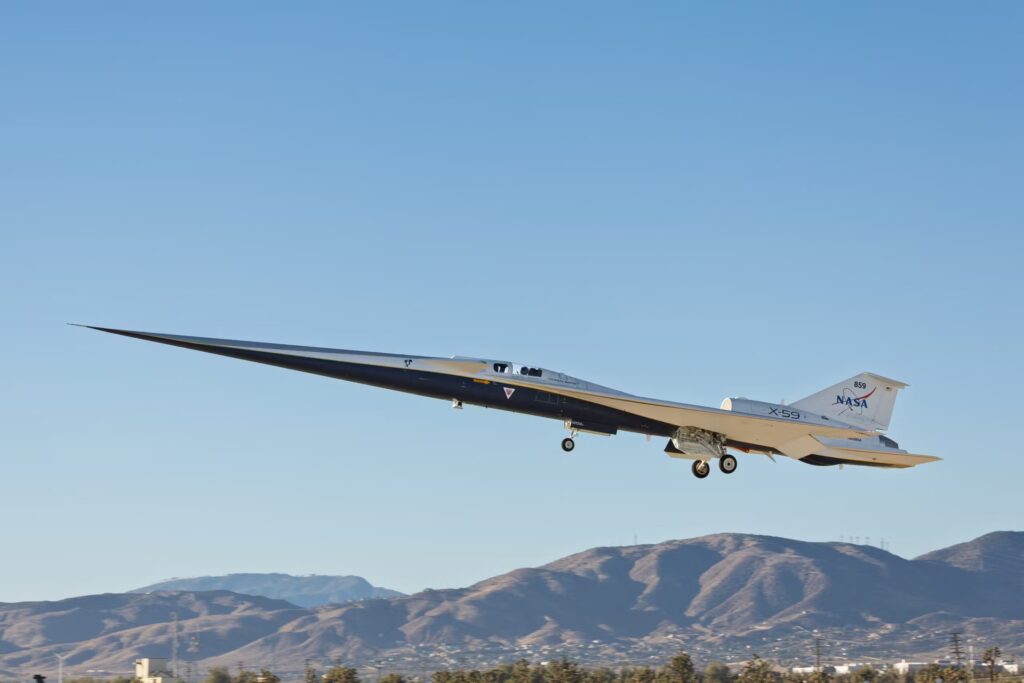Lockheed Martin’s Skunk Works division and NASA have performed the primary flight of the X-59, an experimental supersonic jet designed to scale back the deafening “growth” related to breaking the sound barrier.
The plane took off from Air Pressure Plant 42 in Palmdale, California, and landed safely at NASA’s Armstrong Flight Analysis Heart in Edwards, confirming the fundamental flight and knowledge techniques functioned as anticipated.
The only-seat X-59 is the centrepiece of NASA’s Quesst mission, which seeks to display “quiet supersonic” flight over land.
The undertaking goals to assemble acoustic knowledge that might inform future rules permitting civilian supersonic journey inside nationwide airspace, one thing banned since 1973. Moderately than eliminating the growth, the plane’s lengthy, slender fuselage and offset cockpit are engineered to diffuse the shock waves into what NASA describes as a “thump” that is likely to be acceptable to communities on the bottom.
Lockheed Martin and NASA officers framed the milestone as an essential step for analysis moderately than a prelude to a business plane. Skunk Works vice chairman OJ Sanchez stated the primary flight “verified preliminary flying qualities and air knowledge efficiency” and praised the collaboration with NASA engineers. Performing NASA Administrator Sean Duffy referred to as the jet “a logo of American ingenuity” and stated the programme may “change the best way the general public flies.”
The following part will broaden the flight envelope, together with the X-59’s first supersonic runs to validate its acoustic signature. NASA plans to conduct managed “group response” checks by flying over chosen U.S. cities to gauge public tolerance for the noise. If profitable, the information may information future rule adjustments that may at some point permit business supersonic routes over land.

